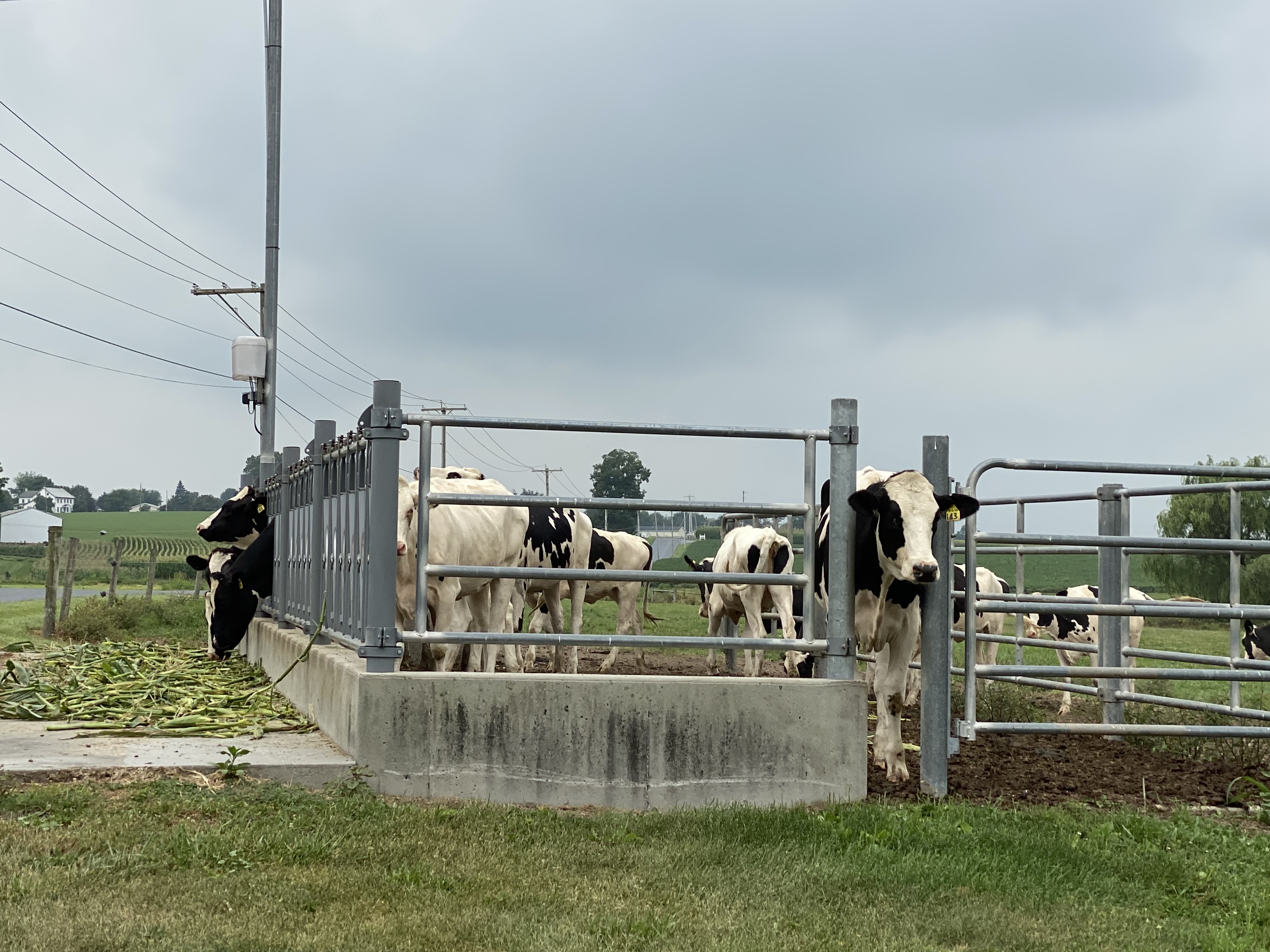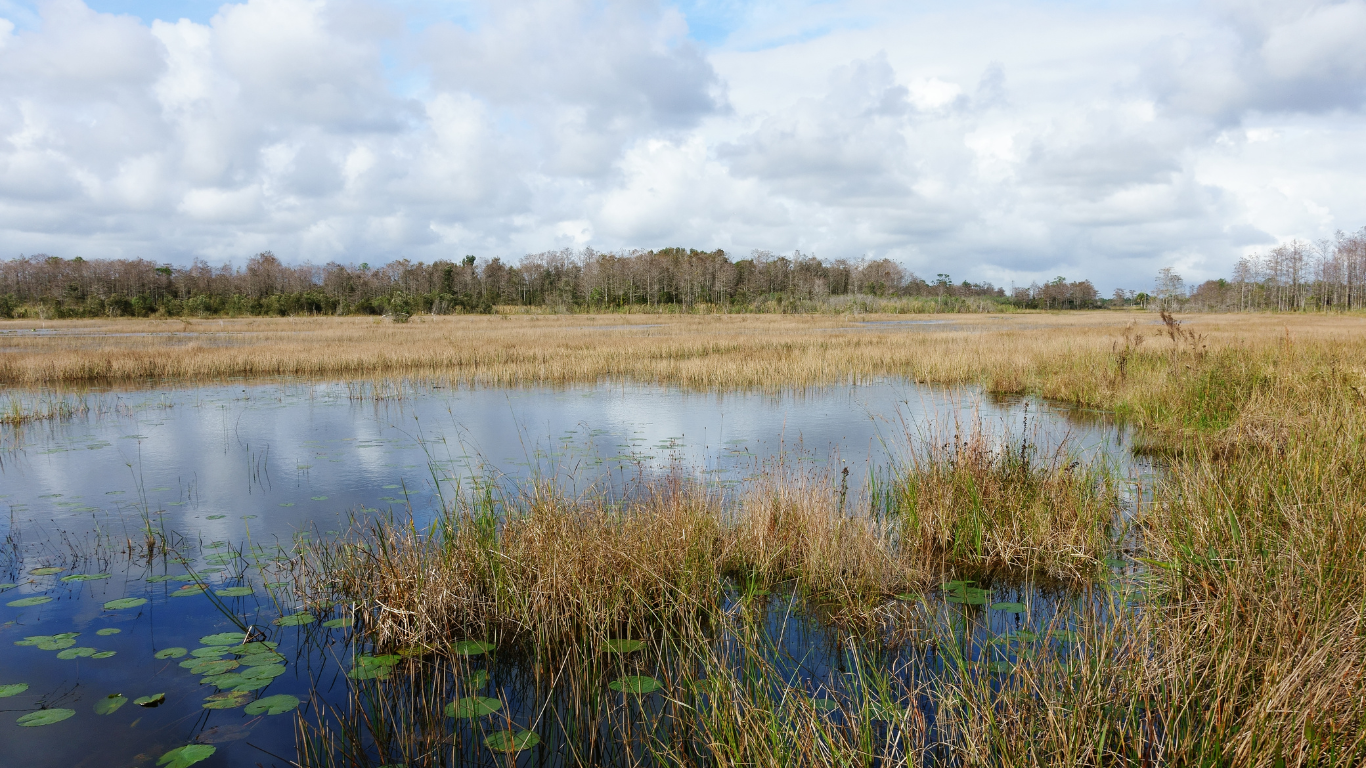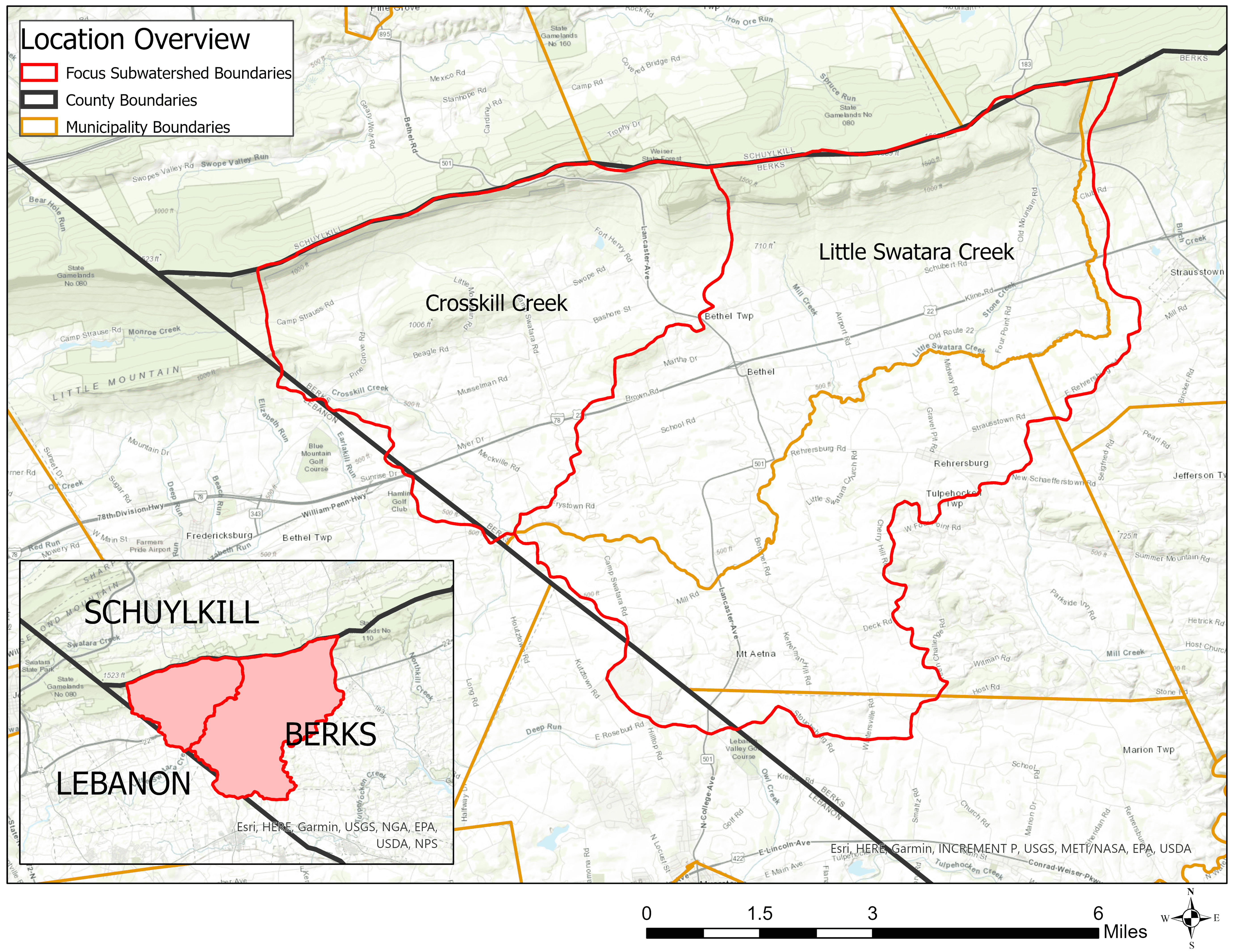
Watershed Implementation Planning Leads to Stream Improvements in Berks County, Pennsylvania
Background
Over the past four years, the Center for Watershed Protection (CWP) collaborated with the Berks County Conservation District to develop a Watershed Implementation Plan for the Upper Little Swatara Creek watershed. This watershed is nestled in the northwestern corner of Berks County, Pennsylvania and drains approximately 60 square miles of predominantly agricultural land (Figure 1). Upper Little Swatara Creek has two main tributaries—Little Swatara Creek and Crosskill Creek—and flows southwest to Susquehanna River near the City of Harrisburg, ultimately reaching the Chesapeake Bay.
Figure 1. Upper Little Swatara Creek Watershed
Funded by a Pennsylvania Department of Environmental Protection 319 Nonpoint Source Management Grant, the plan provides a list of projects that, when installed, will improve water quality and reduce sediment and phosphorus loads to meet local and Chesapeake Bay total maximum daily load (TMDL) requirements.
Field Assessments and Findings
CWP conducted field assessments in Fall 2021 to identify restoration opportunities within the watershed. Field assessments included identification of stormwater retrofit projects, pollutant reduction, and restoration opportunities in neighborhoods and commercial, industrial, institutional, municipal, and transport-related operations. The field assessments resulted in the identification of nineteen total stormwater retrofit opportunities, which cumulatively treat 43 acres of urban land.
Stream assessments were also conducted along agricultural land to provide an understanding of the degree of streambank erosion and potential for stream restoration projects. This field work identified three potential restoration sites, including over 12,000 linear feet of stream restoration. Berks County Conservation District conducted field visits to identify existing farmer practices including agricultural operation type (e.g., crop, livestock, or other), existing crop rotations, near stream and field conservation practices, pasture management, and existing and planned best management practices (e.g., conservation tillage practices, nutrient management, cover crops) on farms. This information was used to model pollutant loads to the study watershed.
Recommended Actions and Watershed Implementation Plan
Nine recommendations were provided to achieve the goals of the plan. These include implementation of agricultural and urban best management practices, stakeholder engagement, business outreach, agricultural land preservation, continued water quality monitoring, review of municipal ordinances specific to warehouse development, and increased staff capacity to support implementation. The total estimated cost for implementation of the plan is $5.3 million dollars. The final Watershed Implementation Plan also addresses EPA’s nine minimum elements of successful watershed plans by:
1. Identifying and quantifying sources of pollution in the watershed;
2. Identifying water quality target or goal and pollutant reductions needed to achieve goal;
3. Identifying the management practices that will help to achieve reductions needed to meet the water quality goal/target;
4. Describing the financial and technical assistance needed to implement management practices identified;
5. Describing the outreach to stakeholders and how their input was incorporated and the role of stakeholders to implement the plan;
6. Estimating a schedule to implement management practices identified in plan;
7. Describing the milestones and estimated time frames for the implementation of management practices;
8. Identifying the criteria that will be used to assess water quality improvement as the plan is implemented; and
9. Describing the monitoring plan that will collect water quality data need to measure water quality improvement.
Because the plan has been approved by the Pennsylvania Department of Environmental Protection and EPA, recommended projects are now eligible for Section 319 implementation funding. The Berks County Conservation District is hard at work implementing agricultural conservation practices within the watershed resulting in the delisting of an aquatic life use impairment for a two-mile stream segment in the Crosskill Creek subwatershed.
The final plan is available here: Upper Little Swatara Creek Watershed Implementation Plan
For more information contact Julie Schneider (jas@cwp.org).

